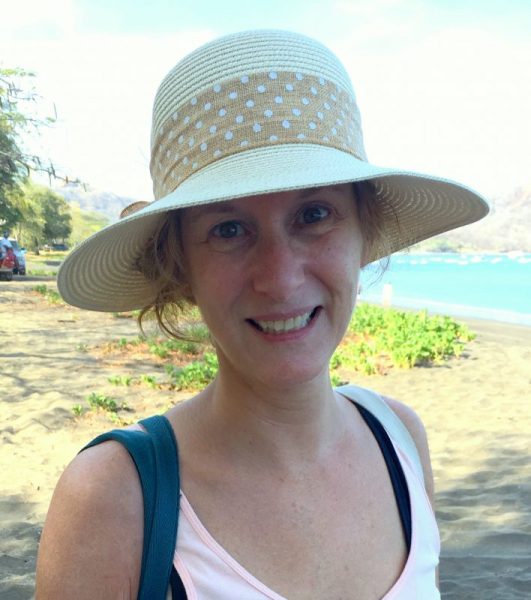Princeton Plan Deemed Problematic for Chappaqua Schools
News Based on facts, either observed and verified directly by the reporter, or reported and verified from knowledgeable sources.
The Chappaqua Central School District is considering splitting its two middle schools up into two separate buildings. One building would house grades five and six, another would be for grades seven and eight. Re-orienting the grades is known as the Princeton Plan Model.
Currently, the district’s two middle schools, Robert E. Bell and Seven Bridges, serve students in grades five through eight.
At last week’s school board meeting, Ross Haber of Ross Haber and Associates presented projected impacts that would result in creating two separate middle schools. Haber’s firm is known for providing demographic information such as enrollment projections to school districts.
“The district was looking at the Princeton Plan Model to reduce class size which is part of the district’s five-year strategic plan,” Superintendent of Schools Dr. Christine Ackerman told the board.
Ackerman added “the reduced class size was addressed in last year’s budget and would be looked at again in the upcoming budget.”
Concerns that Bell middle school has more students than Seven Bridges prompted the district to consider the Princeton Plan. According to Haber’s study, the current enrollment at Bell middle school is 589 students, while 501 students attend Seven Bridges.
Haber said because district enrollment had declined, any significant increase or decrease in enrollment would not be expected over the next five years. The district’s enrollment declined from 3,625 students in 2019-20 to 3,514 students in 2024-25, a decrease of 111 students. The projection through 2029-30 is 3,455, which is a decline of 59 students.
Haber’s 35-page report had multiple maps, utilization tables showing projected enrollments, transportation expenses and travel times. Ultimately, Haber said splitting the middle schools would not be feasible.
“In my opinion no redistricting is warranted now or in the future,” he said.
If the schools were split, Haber said there would be additional costs for transportation, along with added travel times for middle school students. It could mean an earlier start at the high school or a later start for the elementary schools.
Haber pointed out that the district is approximately 19 square miles and is divided by the Saw Mill River Parkway, with two schools on the eastern side of the Parkway (Robert E. Bell Middle School and Douglas Grafflin Elementary School) and three of the schools west of the Parkway (Seven Bridges Middle School, Westorchard Elementary School and Roaring Brook Elementary School).
“You’re going to have kids traveling across the Saw Mill River Parkway, kids who live in the north going to school in the south and they will be on the buses forever. The only way to make that feasible is to double the number of buses to the system.”
A single school bus would cost the district $125,000, according to Haber.
Board Vice President Caillee Hwang said the district’s focus was the increased enrollment at Bell middle school.
“We are paying stipends to the faculty for having a lot more students in their individual middle school classrooms in one building over the other,” Hwang said.
Responding to Hwang’s question, Haber asked, “Would you rather pay some stipend if you had to as opposed to paying $125,000 for a school bus?”
Ackerman agreed that the district paid middle school teachers stipends last year to compensate for more students. “This year, because of the way we budgeted, we are in a better place.”
A parent of a third grader at Westorchard Elementary School said he favored the Princeton Plan because he was concerned with the emotional development of younger students in the fifth grade being in the same building with older eighth graders.
“Obviously the further apart fifth graders can be from seventh and eighth graders is preferable,” he said. “I think prioritizing social development, health, mental and physical development of our kids would be a no brainer.”
He suggested the board create a petition to support the Princeton Plan.
“I’m sure we can get plenty of people who would agree with that,” the parent said.
Ackerman acknowledged Haber’s recommendation of not going forward with any changes to the middle schools.
“It doesn’t make sense in terms of enrollment and transportation is a significant barrier right now at this time,” Ackerman told Haber.
Because the district is looking into electric busing and there are still many unknowns, Ackerman indicated the time to re-orient the middle schools with new transportation requirements might be highly problematic.
“It’s something that would be a deep consideration of the board,” Ackerman said.
At the end of Haber’s presentation, board President Ryan Kelsey suggested the strategic planning committee look at Haber’s presentation. “Then we should talk about it at a future meeting as to how you’d like us to plan forward,” he said.
The next board of education meeting is on Jan. 28. Haber’s presentation can be found on the district website under board of education.

Abby is a seasoned journalist who has been covering news and feature stories in the region for decades. Since The Examiner’s launch in 2007, she has reported extensively on a broad range of community issues. Read more from Abby’s editor-author bio here. Read Abbys’s archived work here: https://www.theexaminernews.com/author/ab-lub2019/
